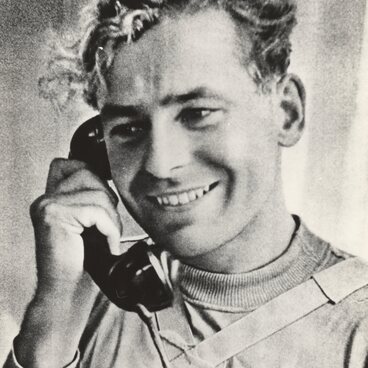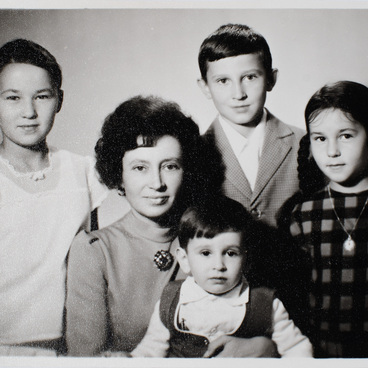An important part of the Gherman Titov Museum is the personal collection of his father Stepan Pavlovich Titov. Currently, it houses around a thousand finished artworks, drawings, sculptures, poems, herbaria, embroideries, and other items demonstrating the numerous talents of this Siberian teacher, musician, artist, and enlightener.
His taste for painting, music, and poetry, the aesthetic sense, and the desire to perceive the beauty of the world around him, Stepan Titov inherited from his teacher Adrian Mitrofanovich Toporov. Over the many years of working in Altai Krai, Toporov, being a unique teacher, managed to raise the region’s culture to a new level by establishing a museum, a theater, a choir, a library, and a women’s school. He introduced the best works of international art to local residents. In particular, Toporov organized the May Morning commune where, for several decades, he discussed the masterpieces of world literature with his adult students. This inspired him to publish a unique collection titled “Peasants on Writers”. Stepan Titov embraced many of the creative aspirations of his teacher.
Most of the artworks from the museum collection were created by the famous cosmonaut’s father between the 1960s and the 1990s. Without any professional artistic training, Stepan Titov passionately worked on paintings, studies, and sketches. He was serious and thoughtful about creating the images in his artworks using all the possible artistic devices, including color, texture, and the play of light and shadow. Many of his works combine various techniques: for example, he could use watercolors, crayons, and graphite pencils in one and the same painting.
Titov Senior strove to try his hand in all areas of fine arts. His paintings include portraits, works depicting specific scenes, still lifes, and landscapes. Stepan Titov celebrated the nature of his native land. He loved Polkovnikovo, dedicated poems to the village, and often depicted it in his paintings, studies, drafts, and sketches.
The art of Stepan Titov was characterized by unique powers of observation, perception of nature, and profound ideas connecting fleeting moments and eternity. In his paintings, lightness and love of life always prevail. All of his works are imbued with kindness, warm-heartedness, and affection for other people and his country.
His taste for painting, music, and poetry, the aesthetic sense, and the desire to perceive the beauty of the world around him, Stepan Titov inherited from his teacher Adrian Mitrofanovich Toporov. Over the many years of working in Altai Krai, Toporov, being a unique teacher, managed to raise the region’s culture to a new level by establishing a museum, a theater, a choir, a library, and a women’s school. He introduced the best works of international art to local residents. In particular, Toporov organized the May Morning commune where, for several decades, he discussed the masterpieces of world literature with his adult students. This inspired him to publish a unique collection titled “Peasants on Writers”. Stepan Titov embraced many of the creative aspirations of his teacher.
Most of the artworks from the museum collection were created by the famous cosmonaut’s father between the 1960s and the 1990s. Without any professional artistic training, Stepan Titov passionately worked on paintings, studies, and sketches. He was serious and thoughtful about creating the images in his artworks using all the possible artistic devices, including color, texture, and the play of light and shadow. Many of his works combine various techniques: for example, he could use watercolors, crayons, and graphite pencils in one and the same painting.
Titov Senior strove to try his hand in all areas of fine arts. His paintings include portraits, works depicting specific scenes, still lifes, and landscapes. Stepan Titov celebrated the nature of his native land. He loved Polkovnikovo, dedicated poems to the village, and often depicted it in his paintings, studies, drafts, and sketches.
The art of Stepan Titov was characterized by unique powers of observation, perception of nature, and profound ideas connecting fleeting moments and eternity. In his paintings, lightness and love of life always prevail. All of his works are imbued with kindness, warm-heartedness, and affection for other people and his country.



